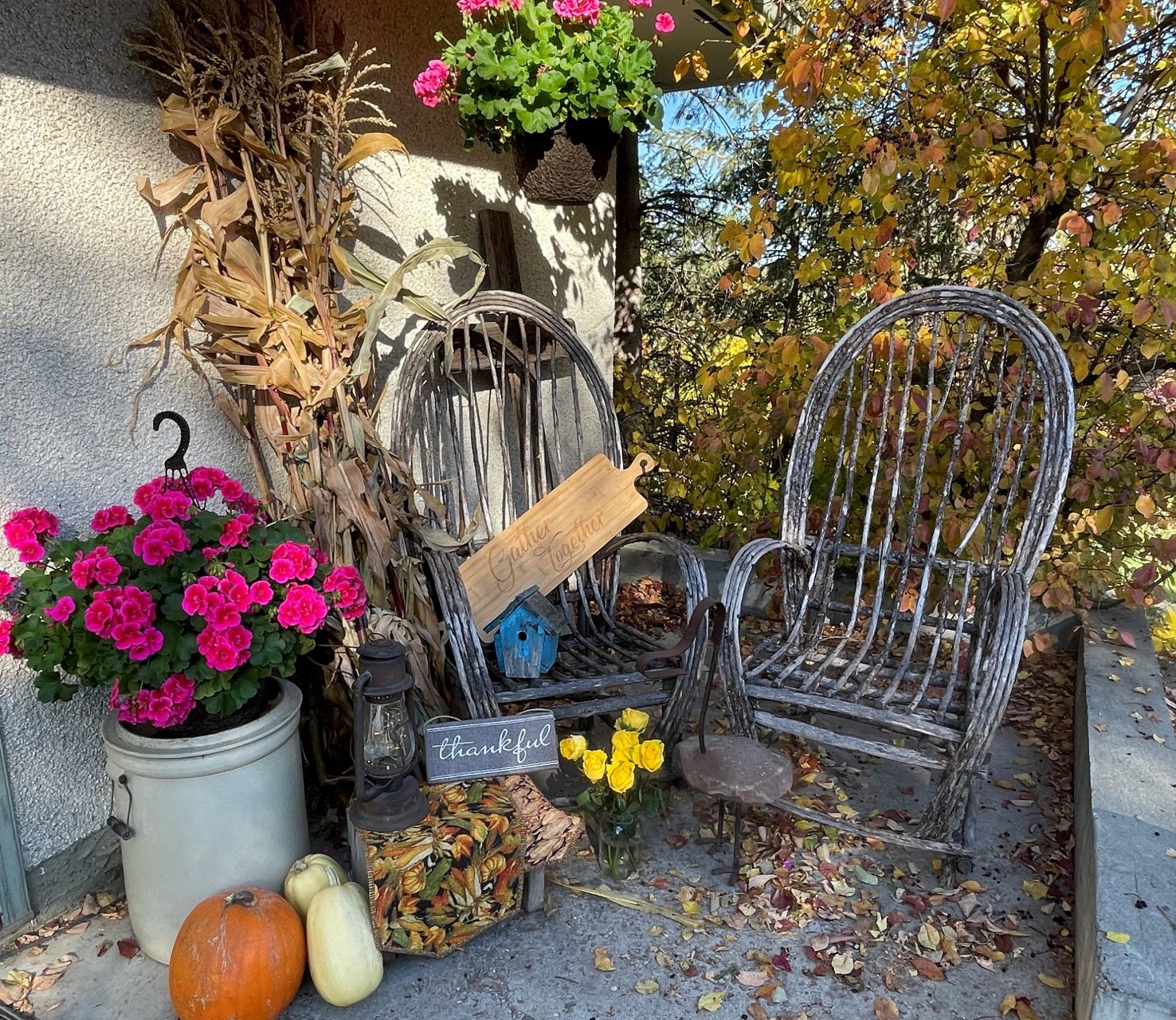Thanksgiving is my favourite holiday. Being thankful is good for me – gratitude is the precursor to joy. The thing I love about Thanksgiving is its simplicity. It’s a time when we can take some space to reflect on how we have been blessed. And I feel the beauty of autumn arouses the flow of gratitude. But for the last 2 years, our holidays have been rather chaotic and uncertain.
Because of the ongoing pandemic, we don’t know what our days will look like from one day to the next, let alone the holidays. We don’t know whether we can spend them with family or friends or if they will be another go-around of modified isolation. It’s the intersection of human relationships and traditions that make holidays special.
In this post, I’d like to talk about traditions; about why they’re good for us, how traditions can go sideways, ways to keep the sparkle in these practices and brainstorm some ideas for Thanksgiving this year.

What are Traditions?
The Miriam-Webster Dictionary defines tradition as “an inherited, established, or customary pattern of thought, action, or behavior (such as a religious practice or a social custom).”
We see a lot of tradition in how we celebrate holidays. For us in North America, the big ones that come to mind are Thanksgiving, Christmas, and Easter. Most of these holidays are packed with traditions, like eating a particular meal, giving gifts, dressing a certain way, and engaging in particular activities.
What are the Benefits of Traditions?
Traditions are valuable to societies. Here’s why:
Traditions Define a Culture
Cultures are characterized by how populations or larger groups of people do things and give those in them an identity.
Traditions Help Form Strong Family Bonds
Families identify with each other within their unique practices. They gather, cook, dine, and spend time together. This strengthens their human connections.
Traditions Give the Yearly Cycle a Foundation and Structure
As holidays come and go, knowing that there are unique, familiar ways of celebrating helps provide security and stability.
Traditions are Good for Mental Health
Predictable patterns of life simply settles us and gives us security. Celebrations to count on allow us to feel connected, and that makes life feel normal. Calm and consistency are good for the health of our minds.
What are the Differences Between Traditions, Customs, and Habits?
Traditions, customs, and habits are all repeated types of behavior. Let’s talk about how they differ from one another.
Traditions
Traditions are actions that have been passed down from generation to generation. They are practiced by numerous people and are usually common to most of the same nation. Extended families also share traditions that have been celebrated for years, and the number of people celebrating them continues to grow.
Examples of Traditions:
- Thanksgiving has been observed in Canada every second Monday of October since 1879.
- Putting up a Christmas tree.
- Easter egg hunts.
- Barbecues on Canada’s birthday, July 1, followed by fireworks at night.
Customs
Customs are social patterns of behavior that haven’t been established for as long as a tradition and aren’t practiced by as many people. Customs may be things we consider normal, everyday things.
Examples of Customs:
- Men opening doors for women.
- Shaking hands when greeting another person.
- Removing shoes before entering a house.
- Celebrating birthdays.
Habits
Habits are repeated patterns of behavior by individuals. Habits are practiced at a personal level to benefit everyday life.
Examples of Habits:
- Making lunch for work the evening prior.
- Checking your garden for moisture each morning during the growing season.
- Taking your dog for a walk each morning and evening.
- Flossing your teeth each night — did you know that over 50% of people lie about flossing??

How Traditions can go Sideways
As discussed above, traditions have many benefits, but sometimes they can derail and begin to feel less exciting and life-giving. How does that happen?
Here’s how:
- Traditions can become stale — sometimes watching that rerun every single year is no longer life-giving.
- Traditions can turn into bondage —Holiday celebrations can become overwhelming and taxing. They just take too much energy to be regenerative, or they can become too restrictive in that they have no elasticity and must unfold in a very specific way or it upsets the entire apple cart.
- Traditions change as families change — Some families grow and expand, while others become smaller. The absence or loss of loved family members stings a sharper on holidays.
What Can You Do When Traditions Don’t Feel Great?
First thing, know that you’re okay. It’s okay to feel what you are feeling. Look at it. Identify it. Speak into it.
Figure out what’s not working and make the changes that need to be made. Do the things you need to make your holidays life-giving. Sometimes that takes significant changes, and other times, it takes minor adjustments. Be flexible.
Above all, do it in love.
How Can You Make Thanksgiving Special This Year?
With the uncertainty of the 2020/2021 pandemic, we don’t really know if we will be able to gather this Thanksgiving. For some people, that’s a relief, but it drains the joy from the holiday for others.
I’d like to encourage you to do a little something or anything that can make your world feel a little bit normal. Think about the things that you have done in the past that made Thanksgiving special…
- Is it a tablecloth for the dining room table?
- Is there a particular food or dessert that you bite into that brings you back to the holiday?
- Could you bake a pie? Or bring a pie home from a bakery? Top it with whipping cream! Whipping cream makes everything a celebration (except for the lactose intolerant).
- Is it a fall walk through the forest? Is it a game of badminton with your cousin?
- Do decorations help draw you into the holiday?
Decorating is the thing that pulls me into celebrating. Each year I evaluate my energy level, I look around my house and collect things that work for fall décor, and then I upcycle them into something rustic and fall-ish. This year it took me 10 minutes to gather my items — a pumpkin, some squash, a few corn stalks from my dad’s garden, an old birdhouse, a table runner, some old willow chairs, and some yellow roses in a mason jar. I left the rest of my fall decorations in a box downstairs; I didn’t even open it.

It took another 6 minutes to put it together. And now it feels a little more like a regular Thanksgiving.
You can do this!
Even with the circumstances of this autumn, think about what you can do to make things feel slightly normal. Something small and simple can help ground you and invite you nearer to the holiday.












